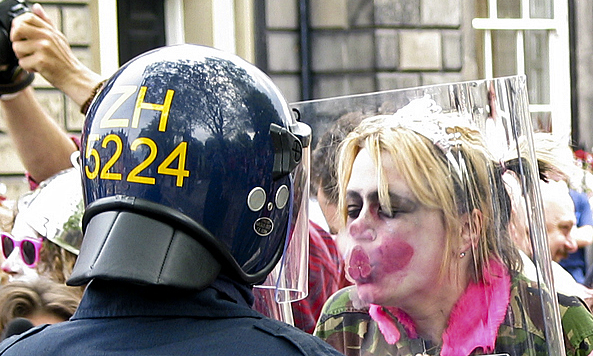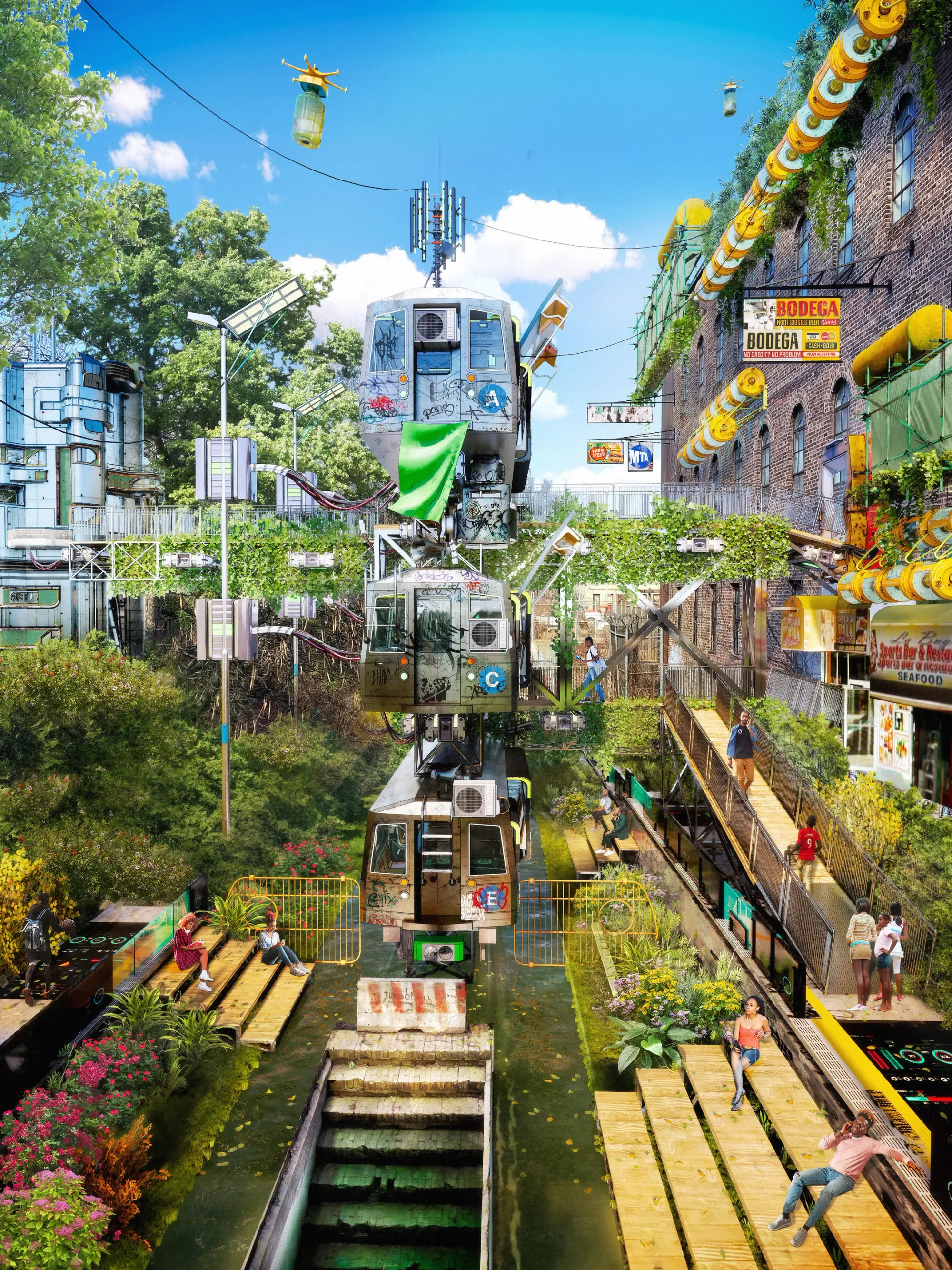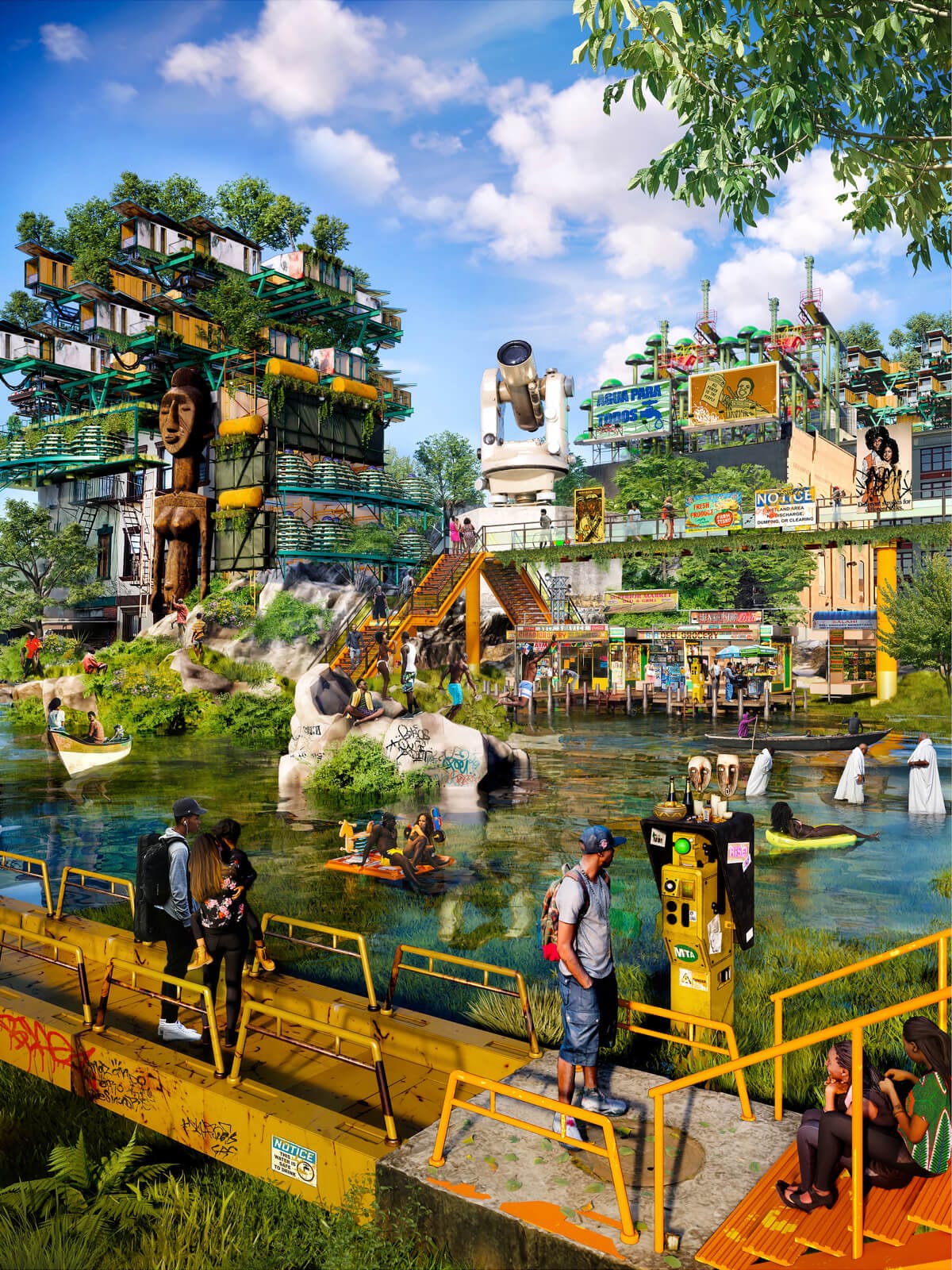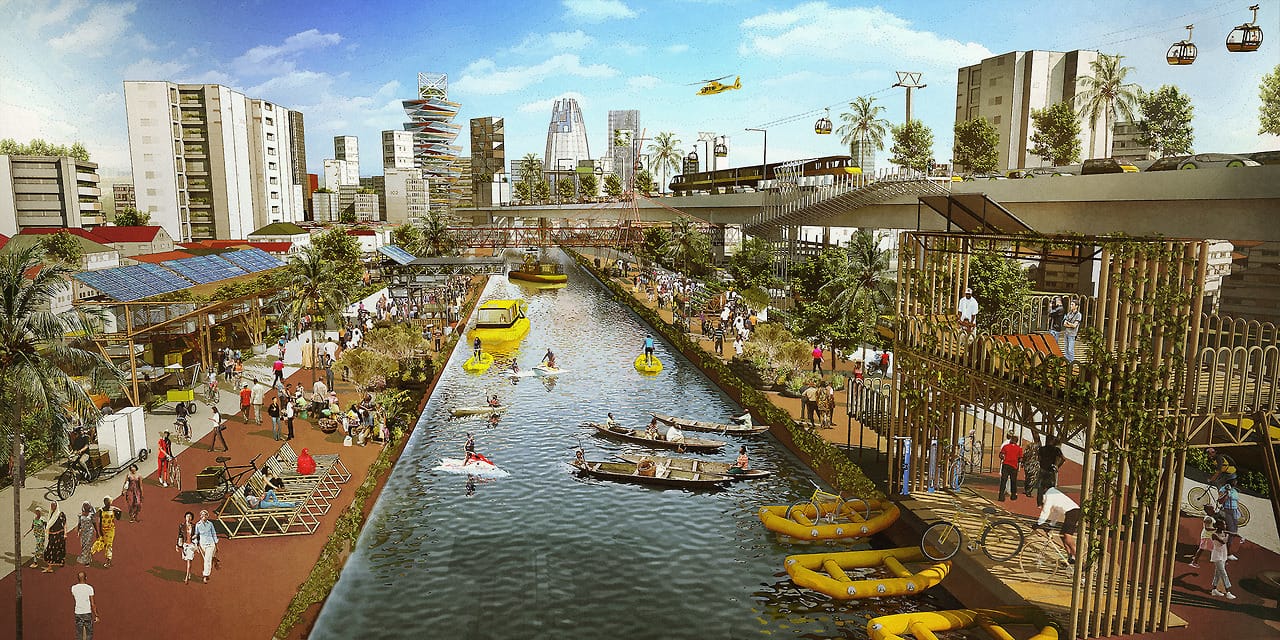Welcome to Dispatch #15! In this issue, we’ll be discussing how we can be more artistic with our activism and share examples & resources for how anyone can get started. Whether you consider yourself an artist or not, everyone is creative - and creativity is exactly what we need to win. This is our time to evolve our protest tactics so that they don't fade into the background. Let's dive in!
SUBMIT A RESOURCE TO THE DIRECTORY!
Know of a helpful resource that you think more people need to hear about? You can now submit it HERE.
First time reading our newsletter? Sign up to get them in your inbox!
Easy Actions to Take
📣 Boycott Alert Reminder!
The BDS Movement has called for a boycott of Disney’s new Snow White movie for starring Gal Gadot as the Evil Queen. Gadot has consistently acted as a cultural ambassador for Israel, even hosting screenings of an Israeli military propaganda film that seeks to justify its live-streamed genocide.
⏱~3min | Complain to the BBC for their silence on the targeted killing of two more Palestinian journalists
Why: On March 24, the IOF targeted Mohammad Mansour and Hossam Shabat, two Palestinian Al Jazeera journalists who had been documenting the genocide since the beginning. They are the latest in over 200 journalists that have been targeted by Israel since the start of the violence. Mainstream media’s silence around these events only further endangers journalists and normalizes these crimes.
⏱~3min | Fight Back Against the Canary Project for Doxxing Palestine Supporters in 2 Steps (below)
Why: The Canary Project is an Israeli-run site that is notorious for doxxing Palestine supporters around the world. They are currently collaborating with the Trump administration to provide lists for illegal arrests and deportations. Their website and its inaccurate information led directly to the illegal detainment of Rumeysa Ozturk, a Turkish student in Massachusets, USA, and more. Help fight back by:
- Report their website to their host (GoDaddy) for harassment
- Report their Instagram posts and page for harassment
Why: Republicans in Congress have introduced the extreme anti-voter Safeguard American Voter Eligibility (SAVE) Act (H.R. 22/S.128) and declared it among their top priorities. This bill would hinder millions of eligible Americans from registering to vote by requiring citizens to present a birth certificate or passport in person to register. Use the 5Calls App to make calling easier!
Little (Movement) Wins

The Rebel Clown Army
Revealing History
The Clandestine Insurgent Rebel Clown Army (also known as CIRCA) was an anti-authoritarian left-wing activist group primarily active from 2003-2005 in the United Kingdom. The group was formed by art activists John Jordan, L.M. Bogad, Jen Verson, and Matt Trevelyan in response to President George W. Bush visiting London in 2003. They staged creative protests against imperialism, corporate globalization, and war throughout the UK with particular focus on the 2005 G8 conference and the Iraq War. As a “Clown Army,” they would dress up as a parody to the real military with decorated army fatigues, marching around, and doing their own clown salute. New members went through a two day “boot camp” they called Big Shoe Camp to learn the art of clowning.
CIRCA created a new methodology for civil disobedience called rebel clowning that merges the ancient art of clowning with contemporary protest tactics. By using humor to their advantage they not only brought more joy back to social justice work, it became a useful tool in subverting the power dynamic between police and protestor.
Their aim was to confuse the enemy instead of direct confrontation. In one instance, a group of 70 clowns walked straight through a line of UK riot cops who, strangely, could not hold their line. When the video footage of the event was examined, it turned out that beneath their visors, the cops were laughing too much to concentrate. Other clowns filled their pockets with so much strange junk that, when arrested, it wasted hours of police time on paperwork. In another tactic, a group of clowns invaded army recruitment offices, occupied them until they were shut down, and then set up their own clown recruitment stand outside instead.
They were not just playing around though. These clowns combined their artistry and humor with principled and disciplined activism. They were anti-capitalist, anti-authority, and even militant (if non-violent) but expressed it in a unique way that disarmed onlookers and countered State media narratives about mobs of angry protestors. By staging anti-capitalist spectacles, blockading roads, and occupying buildings in creative and humorous ways, it confused authorities and amused onlookers which served to de-escalate tense situations, gain public attention, and protect protestors while still achieving campaign goals.
Though short lived, the Clown Army had great impact. Similar clown armies sprung up across Europe and the United States. Rebel clowns responded to neo-Nazi and KKK rallies in the American South, while another group (calling themselves the “Boredom Patrol”) confronts militiamen on the US-Mexico border. CIRCA is a great example of how an artistic practice can be combined with activism to create actions that can actually connect and inspire instead of fading into the background.
📗 Learn More
The People's Dictionary: Right to Revolution
The right of revolution, or right of rebellion, is the right or duty of a people to "alter or abolish" a government that acts against their common interests or threatens the safety of the people without justifiable cause. Stated throughout history in one form or another, the belief in this right has been used to justify various revolutions, including the American Revolution, French Revolution, the Syrian Revolution, the Russian Revolution, and the Iranian Revolution.
A quote from the American Declaration of Independence:
Governments are instituted among Men, deriving their just powers from the consent of the governed, --That whenever any Form of Government becomes destructive of these ends, it is the Right of the People to alter or to abolish it, and to institute new Government, laying its foundation on such principles and organizing its powers in such form, as to them shall seem most likely to effect their Safety and Happiness.
Harnessing the Power of Art in Activism
Connecting the Dots
We’ve marched, we’ve called & emailed our representatives, we’ve signed petitions and sent letters…but is any of it actually moving the needle? Despite our best efforts, things still seem to be getting worse. Don’t forget - scared, hopeless, and depressed is exactly how those in power want you to feel. This is precisely the moment we need to keep pushing and evolving, but we can’t expect the same tactics that worked in the past to always work in the future. As Conscious Citizens, we must challenge ourselves to evolve and grow our tactics, or else we risk fading into the background. In other words - we need to get creative.
The power of Art is that it gives form to abstract feelings and ideas and presents them in a way that can connect with people on an emotional level. As Argentinian writer Jorge Luis Borges summarized: “The task of art is to transform what is continuously happening to us…into something which can last in man’s memory.” It’s no wonder that art has been a key part of almost every successful social movement throughout history, both good and bad. Fascists like Hitler and Mussolini knew the power of art and symbols, and they used these tools to manipulate the masses. Art creates culture, and culture is what unites the people. Fascists worked with luxury fashion designers to create their uniforms and staged massive public spectacles (all while burning books) because they understood this.
As we’ve discussed previously, most of our political views are not formed by facts alone, they are influenced just as much (if not more so) by emotions. While passing out flyers and marching is great, facts alone are not going to change someone’s mind. Art, in the context of politics, is incredibly effective because it deals with many of the things that traditional activism does not. It bypasses our rational mind and directly affects our emotions, bodies, and spirits - precisely the places where our personal political views are formed in the first place. While activism can be considered a tool for the battle for the mind, Art is the primary weapon in the battle for the heart, and both are necessary to win.
What is Artistic Activism?
Artistic Activism is the combination of art’s power to move us emotionally with the strategic planning and objectives of activism that are needed to effectively create systemic change. It’s about building a counter-culture that questions the state-approved mainstream and injecting that into people’s lives in unexpected ways to invite more critical thought. The goal isn’t to force compliance (which art can never do anyway) but to make the politics feel personal, because once an issue feels personal, doing something about it becomes more obvious.
It’s worth noting the distinction between Activist Art and Political Art. We see Political Art (that is: art that has political themes or references political issues) all the time, but that alone doesn’t necessarily change people’s behavior or inspire further action. Often, the goal is to raise awareness or start a conversation, which is great, but then what? Activist Art takes it a step further by channelling the awareness or attention generated by the art into concrete actions. This is critical because without a way to channel that emotional energy, political art can normalize harmful actions or contribute to capitalist realism.
Artistic Activism includes the whole wide breadth of artistic possibilities whether that’s film, performance art, music, sculpture, or really any experience crafted with the goal of influencing someone’s emotions for a specific purpose, and isn’t limited to street art, posters, or zines, which is what we often associate with “activist art” (though they’re still incredibly useful in the right time and place). Here are a few examples of what this looks like from recent history that you may not know:
- In 1995, Bogotá, Colombia was plagued with traffic congestion, gridlock, and fatalities. In a creative solution, the mayor hired 420 mimes to direct traffic. They roamed the streets, mocking and shaming anyone who broke traffic laws. The unexpected humor and the fear of ridicule was incredibly effective and lowered traffic fatalities by 50%. The same technique was replicated in other Latin American cities.
- In 2007, Iraq Veterans Against the War staged a creative protest in cities across America by re-enacting a war scene in popular public spaces. The veterans dressed up in army fatigues, patrolled until they “found a suspect”, and then violently arrested the suspect in the same way they would to an Iraqi civilian. This performance made the true horror and dehumanization of the Iraq War unavoidable for the many comfortable Americans who weren’t aware of the realities of war.
- In 2010, two rappers in Senegal created “Journal Rappé” - a hip-hop infused video news show that would rap about current events in Senegal. The format removed political jargon and made the news much more relatable to young people who needed the information to be more politically informed. The idea has been so successful that similar shows have been created across Africa, Vietnam, and Jamaica.
There are many more examples, and more are being created everyday. You’ll notice none of the examples we discussed here are social media campaigns. While a lot of behind-the-scenes work can be done online, much of this needs to happen in the real world because that’s how we can create a tangible counter-culture that more directly pushes against the mainstream.
How to Make Effective Activist Art
The best pieces of Artistic Activism are custom tailored to the communities, culture, and values of the target audience so specific guidelines are difficult, but in our research we’ve come across some common themes:
- Be strategic: Activist Art is made with a goal, so we need to craft it strategically to make sure we’re achieving our objectives. This means getting very clear about what exactly you hope to accomplish, what action you want to inspire, and how to get there. One helpful tool for setting objectives is to use the SMART framework.
- Don’t Overthink: Artistic Activism is an ongoing practice that requires experimentation - try something, see what happens, adjust, and try again. Don’t get stuck trying to create the “perfect” art piece or performance, as that can often get in the way of “good enough.”
- Surprise: Neurologists have shown that for the majority of our lives, we are in a mild “auto-pilot”, never really critically thinking about what we are doing. This is why surprise is Artistic Activism’s secret weapon. Creating a piece that successfully surprises someone can force them to engage with an issue that they would normally tune out. For example, the movement Reclaim the Streets in the UK teamed up with local ravers to stage protest-parties with DJs and live music instead of chants and signs. This unexpected form of protest stopped people in their tracks and got them to engage with the land-rights issues that Reclaim the Streets was advocating for.
- Imagine: Art has the unique ability to create unique, if temporary, worlds where people can be presented with imaginative alternatives to the current system. Doing so provides an opportunity for people to reflect on their current conditions and dream again. For example, in Sweden, a Chilean-born artist named Alfredo Jaar created a temporary museum out of paper and wood in a small company town named Skoghall. The “museum” installation only lasted for 24hrs before it was burned to the ground. However, that was enough time for residents of Skoghall to realize how nice it would be to have a permanent museum in town, and start organizing for one.
- Context & Contrast: The balancing act of the Artistic Activist is the balance between context and contrast, that is: the piece must have enough cultural context to make sense to the audience but also be enough of a contrast to societal norms that it generates surprise. The most effective Activist Art is aware of the current society’s values and culture, and plays with them in unexpected ways without being so avant-garde that people write it off. For example, the performance staged by Iraq War veterans kidnapping a “suspect” may have impact in Los Angeles, but not nearly the same effect in war-torn Baghdad where there is not enough cultural contrast.
Though they use their powers for evil, some of most effective Artistic Activists, in a sense, are advertisers. Instead of encouraging positive social change, they use their skills to push citizens towards consumerism, and they’ve dedicated many decades of research & development into figuring out how to influence people to buy their product. In their world, it’s known as “social marketing” and they’ve gotten extremely good at it. They have some frameworks, such as the Kotter Change Model or the 5 P’s of Marketing, that we would be remiss to not repurpose for our own goals too.
So, How Do We Start?
As we collectively move into greater levels of political repression, we will all need to get more creative with our political expression. Doing that comes in two parts:
- Build a consistent practice toward creativity, a habit for intentional creative experimentation. We love Rick Rubin's book, "The Creative Act: A Way of Being" for learning approaches and practices to best channel your creativity (available in English & Spanish).
- Collaborate with others (artists and organizers) to come up with ideas, organize, and experiment together. Our best ideas are discovered with others.
For more specific starting points, check our Resources section below. Also, if you are looking for like-minded creative community to build with, we are organizing people of similar artistic interests on our Discord.
One of our favorite things about Artistic Activism is that anyone can do it. So remember that when we say “artist” that does include you. Not everyone sees themselves as an artist or activist, however, we are all creative. After all, creativity is a fundamental aspect of being human.
This article was heavily inspired by the work of the Center for Artistic Activism and their book The Art of Activism by Steve Duncombe & Steve Lambert (linked in the Resource section below)
“Poetry is not only dream and vision, it is the skeleton architecture of our lives. It lays the foundation for a future of change, a bridge across our fears of what has never been before.”
Artists Confronting Inequalities





Olalekan Jeyifous is a Nigerian-born, Brooklyn-based visual artist expanding our collective imagination by offering utopic visions for a new world. As a formally trained architect, Olalekan holds a deep interest in urban issues and the changing role cities play in politics, art, pop culture, and our imaginations.
Through photography, architecture, 3D models, and installations he reimagines NYC and Africa through the lens of climate afrofuturism and invites us to always look for ways, big and little, that we can start transforming our lives and economies, whether it’s by shifting to more circular systems, creating more proactive communities, reconnecting with nature, or using technology as a tool to enhance indigenous knowledge (rather than replace human thought).
Take a minute to notice the details in his work. How could your own city be changed to be more integrated with nature? Share your thoughts & ideas for a solarpunk future in the comments section or in our Discord IMAGINE Channel.
Visit Olalekan's Website | Follow Olalekan on Instagram
Resources & Tools
Please share these links with anyone that might find them helpful:
- 🖼 Actipedia | A creative activism database with examples of how activists and artists are using creative tactics and strategies to challenge power and offer visions of a better society.
- 🖼 The Art of Activism Book | Buy it directly from the publisher O/R Books or on Bookshop. If you are unable to purchase, you can download the book for free on Anna’s Archive.
- 🖼 The Center for Artistic Activism | A training and capacity-building organization to help activists and organizers learn how to tap into and harness their creativity to more effectively push movements forward.
- 🖼 The Center for Story-Based Strategy | Learn strategic storytelling techniques to help you harness your creative power.
- 🧩 Beautiful Trouble’s Activist Campaign Toolbox | A compilation of tools and examples for the creative activist, sorted by Tactics, Theories, Principles, Practitioners and Case Studies, all written by a variety of experienced organizers.
- 🧩 The Activists Handbook | A collection of really helpful guides on organizing, campaign strategy, creative protest tactics, and more.
- 🧩 The Info-Activism How-To Guide | Creative strategies, tools, tips, and guides for creating your own effective advocacy campaign.
- 🖼 How to Make & Use Wheat Paste | A short video to help you DIY your own glue for flyering and postering.
If you're new here, don't forget to sign up to get the next Dispatch emailed to you. Till then, take care, stay safe, and stay strong. Life is rough now for many, but remember we always have each other.
Onward to the World We Deserve,
Elisa & Ray
Uplift The Conscious Citizens
- Like the newsletter? Tell a friend to sign up for the Conscious Citizens or share what you think about us on your social media and tag us (we love reading and sharing testimonials)!
- Wanna give a lil’ love? Grab us a coffee.
- Stay in our orbit! Follow us on Instagram and Bluesky.
If you have the means, reciprocate the love and become a paid member! The more support we get from our community, the more time we are able to dedicate to making activism & community care more approachable to people around the world.
About Little Wins Studio
Little Wins is a Los Angeles-based creative communications studio using the power of multimedia design & storytelling to raise our collective consciousness, connect communities across cultures and classes, and motivate others to improve our world. We do this because we want to see a more engaged, liberated, and regenerative world where all people have access to the knowledge and tools needed to thrive.

